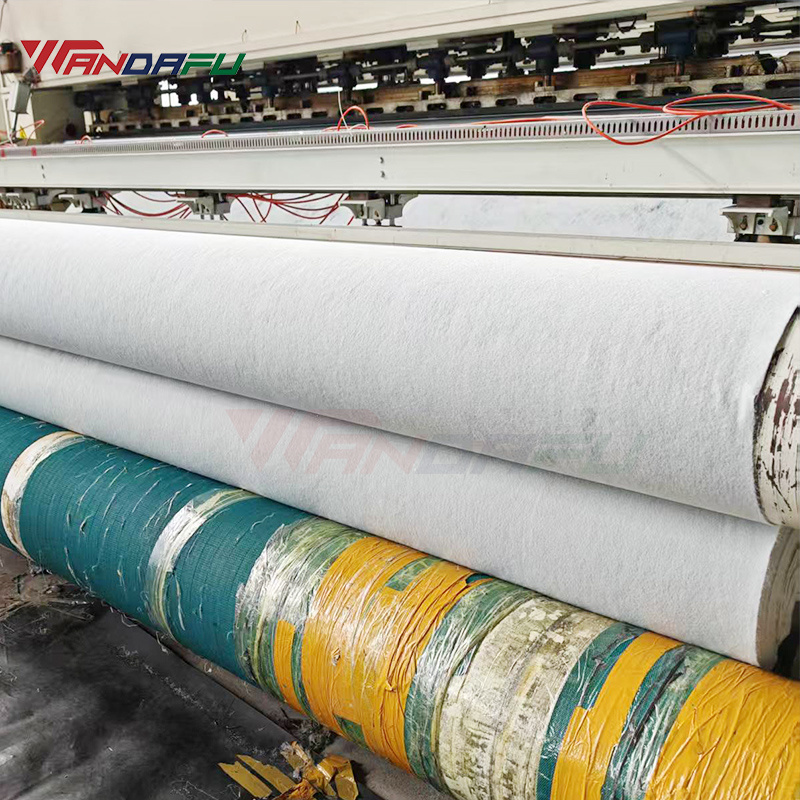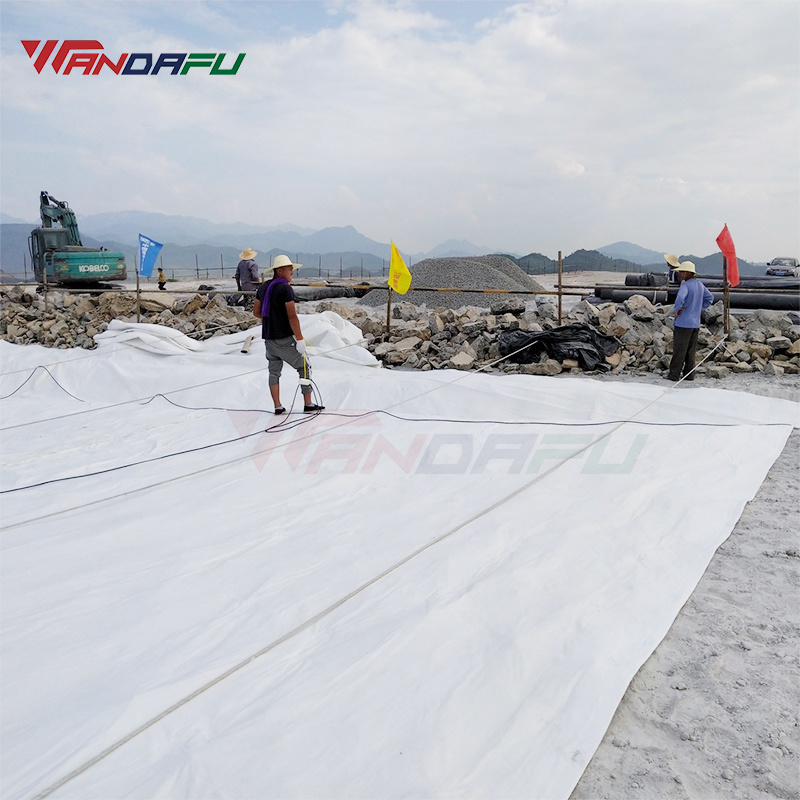
How to Install Needle-Punched Nonwoven Geotextile Fabric: A Step-by-Step Guide
Release time:
2025-04-25
Needle-punched nonwoven geotextile fabric is a versatile material used in construction, landscaping, and civil engineering projects for filtration, separation, and reinforcement. Proper installation ensures maximum performance and longevity. This guide covers best practices for installing needle-punched geotextile fabric, including storage, handling, laying, and repair methods to meet industry standards.
Needle-punched nonwoven geotextile fabric is a versatile material used in construction, landscaping, and civil engineering projects for filtration, separation, and reinforcement. Proper installation ensures maximum performance and longevity. This guide covers best practices for installing needle-punched geotextile fabric, including storage, handling, laying, and repair methods to meet industry standards.

1. Storage, Handling, and Transportation
Storage Requirements
-
Store rolls on a flat, dry surface to prevent water damage.
-
Stack no more than four rolls high to avoid deformation.
-
Cover with UV-resistant material to prevent sunlight degradation.
-
Keep identification tags and documentation intact for quality tracking.
Transportation & Handling
-
Handle rolls carefully to avoid edge damage or tears.
-
Use forklifts or lifting straps to prevent roll deformation.
-
Damaged rolls must be repaired before use; severely damaged rolls should be discarded.
-
Avoid contact with chemicals or oils that could degrade the fabric.
2. Geotextile Installation Methods
A. Manual Unrolling & Placement
-
Unroll the fabric smoothly, avoiding wrinkles or folds.
-
Allow extra material (5-10%) for ground movement and adjustments.
-
Overlap adjacent rolls by 300–900 mm (12–36 inches) for proper seam strength.
B. Seaming Techniques
Needle-punched geotextile can be joined using:
-
Overlap Seaming (No Sewing)
-
Minimum 300 mm (12 inches) overlap for standard applications.
-
Secure with landscape staples or sandbags to prevent shifting.
-
-
Sewn Seams (For High-Stress Areas)
-
Use continuous stitching (not spot stitching).
-
Stitch type: Double-lock chain stitch for durability.
-
Needle distance from edge: ≥25 mm (1 inch).
-
Thread must be UV-resistant and chemical-proof.
-
-
Thermal Bonding (Heat Welding)
-
Best for permanent installations (e.g., landfills).
-
Use a hot air welder with controlled temperature settings.
-

3. Key Installation Requirements
A. Subgrade Preparation
-
Remove sharp rocks, roots, and debris to prevent punctures.
-
Compact and level the soil to avoid uneven stress on the fabric.
B. Anchoring & Securing
-
Anchor one end (e.g., at the top of a slope) before unrolling.
-
Use sandbags, staples, or adhesive to hold the fabric in place.
C. Edge & Overlap Fixing
-
Overlap seams parallel to slope direction (avoid cross-slope seams).
-
For slopes, no horizontal seams except for repairs.
D. Protection Before Backfilling
-
Cover with sand or gravel immediately to prevent UV exposure.
-
Avoid heavy machinery directly on the fabric.
4. Inspection & Repair Procedures
A. Daily Visual Checks
-
Inspect for tears, punctures, or seam failures.
-
Mark defects with waterproof tape for later repair.
B. Repair Methods
-
Small Holes (<50 mm)
-
Patch with same-material geotextile, extending 200 mm (8 inches) beyond the damage.
-
Secure with heat welding or adhesive.
-
-
Large Tears (>10% of roll width)
-
Cut out the damaged section and re-stitch or weld the remaining fabric.
-
-
Seam Failures
-
Re-stitch with stronger thread or reinforce with an additional overlap.
-
5. Common Mistakes to Avoid
❌ Insufficient Overlap → Leads to separation under load.
❌ Poor Subgrade Prep → Causes punctures and premature failure.
❌ Exposed to UV for Too Long → Weakens fabric before backfilling.
❌ Using Damaged Rolls → Reduces effectiveness and lifespan.
Conclusion
Proper installation of needle-punched nonwoven geotextile fabric ensures optimal filtration, separation, and reinforcement in construction projects. Follow these steps for long-lasting performance:
✔ Store & handle carefully to avoid damage.
✔ Prepare the subgrade properly before laying.
✔ Use correct seaming techniques (overlap, sewing, or welding).
✔ Inspect and repair defects before backfilling.
By following these guidelines, your geotextile installation will meet engineering standards and maximize durability.
Latest News



